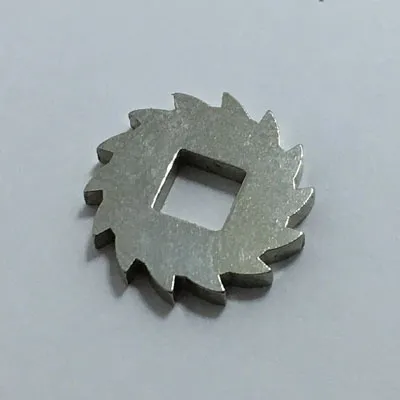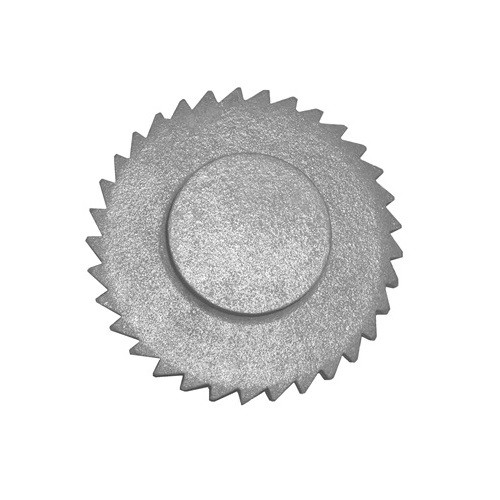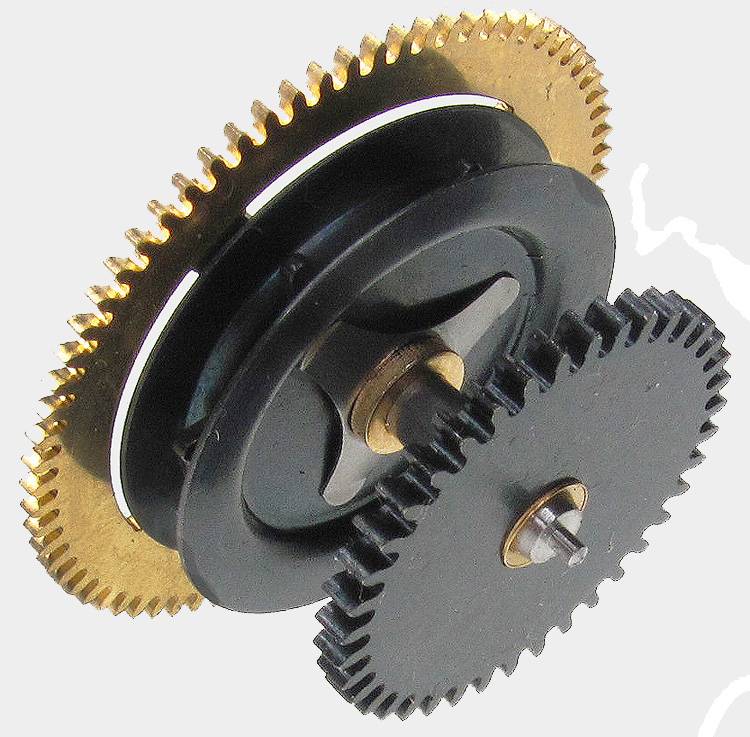Product Description
Product Introduction:
The centering rollers are used to automatically correct the excessive runout of the conveyor belt in operation to ensure the normal operation of the conveyor. The installation accuracy is high, especially for the conveyor which has set the front inclined rollers, the centering rollers can not be set. For conveyors that need to set centering rollers, generally there is 1 set of centering rollers in every 10 groups of rollers.
There are many types of spherical rollers, DTII(A) type belt conveyor is equipped with 2 types of spherical rollers, namely friction spherical rollers and conical spherical rollers, both of which can be used for reversible belt conveyor.
The friction roller is the necessary support device to solve the problem of conveyor eccentricity. Its main function is to prevent and control the "deviation" of the conveyor belt, prevent material leakage, improve transportation efficiency, and ensure safe, efficient and energy-saving transportation. Straightening rollers are widely used in mining, metallurgy, electric power, chemical, food and other industries.
Friction centering roller mm
| Belt Width B |
D | L | H | H1 | H2 | E | A | P | Q | d | Bearing Typt | Weight kg |
Image No. |
| 500 | 89 | 200 | 220 | 135.5 | 346.5 | 936 | 740 | 170 | 130 | M12 | 4G204 | 48.4 | DTII 01C1111 |
| 650 | 250 | 235 | 375 | 1069 | 890 | 51.7 | DT02C1111 | ||||||
| 800 | 315 | 245 | 400 | 1203 | 1090 | 58.0 | DT03C1111 | ||||||
| 108 | 270 | 146 | 440 | 1260 | 4G205 | 73.1 | DT03C1122 | ||||||
| 1000 | 380 | 300 | 159 | 487.5 | 1456 | 1290 | 220 | 170 | M16 | 4G305 | 87.2 | DT04C1123 | |
| 138 | 325 | 173.5 | 505 | 1492 | 107.0 | DT04C1133 |
Tapered upper centering rollers mm
| Belt Width B |
D | D1 | D2 | L1 | L2 | H | H1 | H2 | E | A | P | Q | d | Bearing Typt | Weight
kg |
Image No. |
| 800 | 89 | 89 | 133 | 250 | 340 | 245 | 135.5 | 380 | 1150 | 1090 | 170 | 130 | M12 | 4G204 | 49.3 | DT03C1211 |
| 108 | 270 | 146 | 400 | 4G205 | 51.9 | DT03C1222 | ||||||||||
| 1000 | 108 | 159 | 315 | 415 | 300 | 159 | 450 | 1350 | 1290 | 220 | 170 | M16 | 4G305 | 70.0 | DT04C1223 | |
| 133 | 325 | 173.5 | 478 | 72.9 | DT04C1233 | |||||||||||
| 1200 | 108 | 176 | 380 | 500 | 335 | 176 | 521 | 1600 | 1540 | 260 | 200 | 4G306 | 85.6 | DT05C1224 | ||
| 133 | 360 | 190.5 | 548 | 87.4 | DT05C1234 | |||||||||||
| 159 | 133 | 194 | 390 | 207.5 | 578 | 98.0 | DT05C1244 | |||||||||
| 1400 | 108 | 108 | 176 | 465 | 550 | 350 | 184 | 558 | 1800 | 1740 | 280 | 220 | 4G305 | 98.0 | DT06C1223 | |
| 4G306 | 102.0 | DTC061224 | ||||||||||||||
| 133 | 380 | 198.5 | 584 | 4G305 | 99.7 | DT06C1233 | ||||||||||
| 4G306 | 104.0 | DT06C1234 | ||||||||||||||
| 159 | 133 | 194 | 410 | 215.5 | 615 | 4G305 | 105.0 | DT06C1243 | ||||||||
| 4G306 | 110.0 | DT06C1244 |
Application:
Company Introduction:
Xihu (West Lake) Dis. CHINAMFG transportation Machinery Manufacturing Co., Ltd. is located in ZheJiang (Xihu (West Lake) Dis.) rubber conveyor belt industrial zone, near by the Capital ZheJiang city, The location is superior and the transportation is convenient. Our company has always attached importance to personnel training and investment in science and technology, relying on advanced production and testing, strong capital and technical strength, perfect after-sales system, so that the products are exported to all parts of the world.
Our company is the professional manufacturer of producing all kinds of conveyor belt, roller, trestle, roller, crusher and other machines, with strong technical capacity, advanced and complete equipment. Our products are widely used in: iron and steel, metallurgy, cement, power generation, fertilizer, grain depot, port and other industries.
Our company adheres to the basic principle of serving customers: "quality, technology, after-sales service", and constantly strengthens the comprehensive competitiveness of the company among its peers, seeks development in competition, and seeks opportunities in challenges. CHINAMFG will provide you with supieror quality products and after-sales service. We are willing to go hand in hand with you honestly,to create brilliance together!
/* March 10, 2571 17:59:20 */!function(){function s(e,r){var a,o={};try{e&&e.split(",").forEach(function(e,t){e&&(a=e.match(/(.*?):(.*)$/))&&1
| Material: | Steel |
|---|---|
| Application: | Chemical Industry, Grain Transportation, Mining Transport, Power Plant |
| Structure: | Ordinary Roller |
| Bearing Type: | Double Sealed Bearing |
| Type: | Grooved Conveyor Idler |
| Manufacturer: | Yes |
| Customization: |
Available
|
|
|---|

Can you provide examples of machinery or equipment that commonly use ratchet wheels?
Ratchet wheels are commonly used in various machinery and equipment across different industries due to their ability to provide controlled motion and security. Here are examples of machinery and equipment that commonly incorporate ratchet wheels:
- 1. Ratchet Wrenches: Ratchet wrenches, also known as socket wrenches, utilize ratchet wheels to enable continuous tightening or loosening of nuts and bolts without the need to remove and reposition the wrench. The unidirectional motion of the ratchet wheel allows for efficient and convenient use.
- 2. Winches and Hoists: Winches and hoists, whether manual or powered, frequently employ ratchet wheels in their mechanisms. Ratchet wheels ensure controlled lifting, lowering, or pulling of loads while preventing unintended backdriving.
- 3. Handbrakes in Vehicles: Many vehicles, especially older models, feature handbrake systems that rely on ratchet wheels. These ratchet mechanisms secure the vehicle's position when the handbrake lever is engaged, preventing the vehicle from rolling.
- 4. Tie-Down Straps: Ratchet mechanisms are integral components of tie-down straps used for securing cargo during transportation. They maintain tension in the strap and prevent slack, ensuring that the load remains securely fastened.
- 5. Conveyor Systems: Conveyor systems in manufacturing and logistics often incorporate ratchet wheels to control the movement of items along the conveyor belts. Ratchet wheels enable precise indexing and positioning of products.
- 6. Scaffold Systems: Scaffold systems used in construction frequently feature ratchet wheels in their height adjustment mechanisms. Workers can raise or lower scaffolding platforms incrementally, ensuring safety and stability.
- 7. Fishing Reels: Fishing reels, such as baitcasting and trolling reels, use ratchet wheels in their drag systems. This allows anglers to smoothly reel in fish while preventing the fish from pulling out line unintentionally.
- 8. Safety Mechanisms: Various safety mechanisms and emergency stop systems employ ratchet wheels to ensure that once activated, the system remains in a safe state until intentionally reset. This is crucial in industrial and machinery safety applications.
These examples demonstrate the versatility of ratchet wheels in different industries and applications where controlled motion, security, and prevention of reverse movement are essential requirements.

What are the signs that indicate a need for ratchet wheel replacement or maintenance, and how can they be diagnosed?
Recognizing the signs that indicate the need for ratchet wheel replacement or maintenance is crucial for ensuring the reliability and safety of mechanical systems. Here are common signs and how to diagnose them:
- 1. Excessive Wear: Check the ratchet wheel's teeth for signs of excessive wear or rounding. If the teeth are visibly worn down, it's an indication that the ratchet wheel may not engage properly and should be replaced.
- 2. Irregular Tooth Engagement: During operation, if you notice irregular engagement of the ratchet wheel with the pawl or catch, it may indicate misalignment, damage, or wear. Investigate and address the issue to prevent further damage.
- 3. Slippage: If the ratchet wheel slips when subjected to a load within its specified capacity, it's a clear sign of wear or damage. This can compromise the safety and reliability of the system and warrants immediate attention.
- 4. Unintended Movement: In applications where a ratchet wheel is used to prevent unintended movement or reverse motion, any unexpected movement suggests a problem. This may be due to wear, damage, or a malfunctioning pawl mechanism.
- 5. Noise and Vibration: Unusual noises, such as grinding or rattling, or excessive vibration during ratchet wheel operation can indicate issues with teeth engagement, misalignment, or worn components.
- 6. Difficulty in Turning: If the ratchet wheel becomes difficult to turn, it may be due to increased friction caused by wear or contamination. This can lead to inefficient operation and should be addressed.
- 7. Visual Inspection: Regularly inspect the ratchet wheel for visible damage, cracks, or deformities. Any visible defects should be taken as a sign that maintenance or replacement is needed.
- 8. Pawl or Catch Condition: Examine the condition of the pawl or catch that interacts with the ratchet wheel. Signs of wear or damage on the pawl can affect the engagement and should be addressed.
- 9. Reduced Efficiency: If the ratchet wheel system is no longer operating with the same level of precision and efficiency as before, it may be an indication of wear or misalignment.
- 10. Routine Maintenance Schedule: Implement a routine maintenance schedule for ratchet wheel systems. Regular maintenance can help identify early signs of wear or issues before they become critical.
- 11. Load Testing: Conduct load testing to ensure that the ratchet wheel can handle its specified load capacity without slipping or exhibiting signs of stress. Any failures during load testing should prompt maintenance or replacement.
Diagnosing the need for ratchet wheel replacement or maintenance often involves a combination of visual inspection, functional testing, and a good understanding of the system's expected performance. Addressing issues promptly can prevent failures and improve the safety and reliability of mechanical systems.

Can you describe the factors to consider when selecting ratchet wheels for specific applications?
When selecting ratchet wheels for specific applications, several important factors should be taken into consideration to ensure optimal performance and reliability. These factors include:
- 1. Load Capacity: Determine the maximum load or force the ratchet wheel will need to handle. Choose a ratchet wheel with the appropriate load capacity to ensure safe and efficient operation. Larger and more robust ratchet wheels are suitable for heavy-duty applications.
- 2. Space Constraints: Consider the available space within the mechanical system where the ratchet wheel will be installed. Ensure that the selected ratchet wheel size fits within the allocated space without interference or clearance issues.
- 3. Tooth Profile: The tooth profile of the ratchet wheel should match the application's requirements. Standard ratchet wheels have angled teeth, while fine-tooth ratchet wheels offer finer control. Select the tooth profile that suits the desired level of precision and movement control.
- 4. Material: Choose a ratchet wheel material that is compatible with the application's environment and demands. Common materials include hardened steel or alloy metals for durability. In corrosive environments, opt for corrosion-resistant coatings or materials.
- 5. Pawl Compatibility: Ensure that the selected ratchet wheel is compatible with the pawl or catch mechanism used in the application. The pawl should effectively engage and disengage with the ratchet wheel's teeth for reliable operation.
- 6. Precision Requirements: Consider the level of precision required in the application. Fine-tooth ratchet wheels are suitable for applications demanding precise adjustments, while standard ratchet wheels offer a balance of control and strength.
- 7. Operating Conditions: Evaluate the operating conditions, including temperature extremes, humidity, and exposure to chemicals or contaminants. Select ratchet wheels that can withstand these conditions without degradation.
- 8. Customization: For specialized applications or unique requirements, consider the option of custom-designed ratchet wheels. Customization allows for tailoring the ratchet wheel's size, tooth profile, and material to meet specific needs.
- 9. Maintenance: Assess the ease of maintenance and lubrication requirements. Some ratchet wheels may need periodic cleaning and lubrication to ensure smooth and reliable operation.
- 10. Regulatory Compliance: In some industries, specific standards and regulations may govern the choice of components. Ensure that the selected ratchet wheel complies with relevant industry standards and safety regulations.
By carefully considering these factors, you can select the most suitable ratchet wheel for your specific application, promoting efficient and reliable performance while minimizing the risk of issues or failures.


editor by CX 2023-12-18